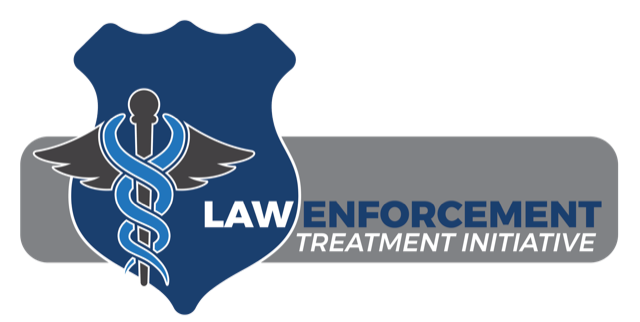In the aftermath of the Covid-19 pandemic, workplace well-being is front-of-mind for many businesses and organizations. While trends like “quiet quitting” and the Great Resignation exacerbated general workforce shortages, the behavioral and medical health care fields were significantly impacted at a time when the need for services only increased.
In October 2022, the United States Surgeon General, Dr. Vivek Murthy released a new Framework for Workplace Well-Being. These guidelines underscore the important role employers have in promoting and protecting the mental health and well-being of team members and the communities they operate in.
Keep reading for an overview of the Framework’s 5 essentials to promote workplace well-being.
If you or someone you love needs help with substance use, please call our 24-hour Treatment & Referral HelpLine at 833.976.HELP (4357) or email HelpLine@gaudenzia.org today.

5 Essentials for Workplace Well-Being
In 2021, 76% of U.S. workers reported at least one symptom of a mental health condition, while 84% of survey respondents stated their workplace conditions contributed to at least one mental health challenge. The U.S. Surgeon General’s Framework for Mental Health and Well-Being in the Workplace outlines “Five Essentials” for employers to consider.
These guidelines are designed to help leaders develop policies and practices that promote workplace well-being, prevent employee burnout, and help increase retention. Let’s dive in.
1. Protection from Harm
The first “essential” of the Framework is “Protection from Harm.” This component addresses workers’ needs for safety and security. Employers are responsible for protecting workers from both physical and non-physical harm, including workplace injuries, illness, discrimination, and harassment.
The key components of this pillar include:
- Physical and Psychological Safety — Reducing or eliminating physical and psychological hazards.
- Adequate Rest — Long hours can raise workers’ risk for anxiety, depression, injury, and susceptibility to burnout. Providing opportunities for rest is an essential component of workplace well-being.
- Mental Health Support — Employers should support mental health by providing access to high-quality, affordable mental health services that include telehealth, on-site and off-site care after hours, and by encouraging time off for mental health and self-care.
- DEIA Policies & Practices — Implementing meaningful diversity, equity, inclusion, and accessibility policies and programs to provide a workplace environment where team members feel safe to be authentic and express their feelings, perspectives, and concerns.
2. Connection & Community
Social support and belonging are basic human needs. Fostering positive workplace interactions and relationships can help boost worker mental health and well-being by mitigating feelings of loneliness and isolation.
Key components of the Framework’s Connection & Community pillar include:
- Creating a Culture of Inclusion & Belonging — By encouraging “prosocial” behavior, workplaces can promote positive social relationships where team members welcome, help, and reassure others. Environments that foster a sense of belonging can reduce bias, discrimination, and exclusion.
- Cultivating Trusted Relationships — Positive relationships between leaders and team members, as well as between employees collaborating on teams, can lead to better performance, increased engagement and innovation, and fewer workplace injuries.
- Fostering Collaboration & Teamwork — In the age of hybrid and remote work, employers need to be intentional and proactive about fostering teamwork. Implementing collaboration tools, allocating time for non-work related connection, and scheduling opportunities to connect in-person can help foster connection.

3. Work-Life Harmony
The concept of work-life balance has gained much attention in recent years as employees have had to juggle personal and professional demands in new ways. Reducing work-life conflicts can help decrease stress and increase employee satisfaction.
Key components of fostering work-life harmony include:
- Autonomy & Flexibility — Providing team members with greater autonomy and flexibility over when, where, and how they complete their work.
- Access to Paid Leave — Increasing access to paid sick, family, medical, and parental leave, as well as paid time off for vacation, can greatly help team members achieve work-life balance.
- Respect Work-Life Boundaries — Employees report a greater sense of well-being when leadership sets, respects, and models clear boundaries between work and non-work time. It is also helpful for organizations to create policies that limit non-essential digital communications outside of work hours.
4. Mattering at Work
The pandemic inspired many to take stock of their lives and pursue more meaningful work. Having a sense of dignity and meaning in our work lives can play a major role in fulfilling our basic human needs. Employees want to know they matter in the workplace, and that the work they do is meaningful.
Employers can help team members feel valued by providing or facilitating:
- A Living Wage — An equitable, stable, and predictable living wage is critical for workers’ mental health and well-being.
- Comprehensive Benefits — Team members should have access to benefits that help protect their physical and mental health, enable them to plan for retirement, provide access to financial and legal services, and more.
- Employee Engagement in Workplace Decision Making — Team members feel valued and heard when given agency and input in organizational decisions, creating goals, and setting objectives.
- Employee Recognition — Creating an environment where employees receive recognition and feel appreciated by co-workers and supervisors increases workplace well-being and makes team members more likely to recognize and appreciate others.
- Connection to Mission — Reinforcing how employees’ day-to-day efforts help advance an organization’s mission helps create a sense of shared purpose, increases employee morale, and boosts motivation.
5. Opportunities for Growth
The final pillar of the Framework’s Five Essentials encourages employers to provide opportunities for team members to learn and grow. A sense of learning and accomplishment go a long way in keeping employees engaged, motivated, and satisfied.
Key components of this Essential include providing:
- Education — Opportunities to learn and build new skills through trainings, education, and mentoring help foster growth and increase long-term retention.
- Pathways to Career Advancement — Clearly defined, attainable career pathways that are inclusive and equitable helps foster professional growth and diversity in the workplace.
- Guidance and Feedback — Considering team members’ strengths and growth opportunities and providing fair, constructive feedback while remaining open to reciprocal feedback helps foster a collaborative work environment that encourages growth.

Workplace Well-Being at Gaudenzia
Gaudenzia strives to be the employer of choice for those who want to make an impact with their work. We’re proud to foster an inclusive, supportive work environment where every voice matters — and where our team members always have opportunities to bring innovative ideas to life. Our comprehensive benefits package is designed to maximize the well-being of our employees.
Interested in joining our team? Browse our career opportunities here.
If you or someone you love needs help with substance use and co-occurring disorders, please call our 24-hour Treatment and Referral HelpLine at 833.976.HELP (4357) or email helpline@gaudenzia.org today.
We’re on social media! Follow Gaudenzia on Instagram, Twitter, Facebook and LinkedIn — and don’t forget to subscribe to our YouTube channel for updates and more educational content.







